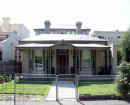ALFRED GRAVING DOCK
WILLIAMSTOWN DOCKYARD 2-10 NELSON PLACE WILLIAMSTOWN, HOBSONS BAY CITY
-
Add to tour
You must log in to do that.
-
Share
-
Shortlist place
You must log in to do that.
- Download report
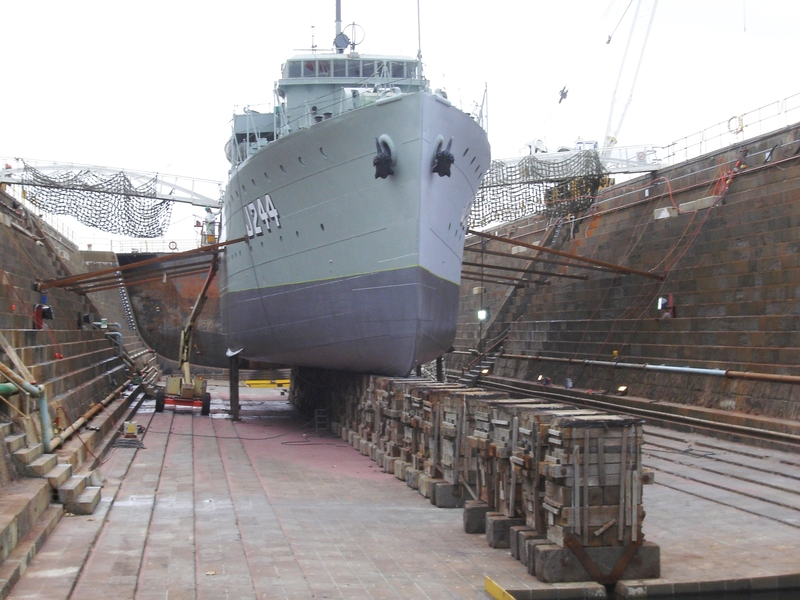

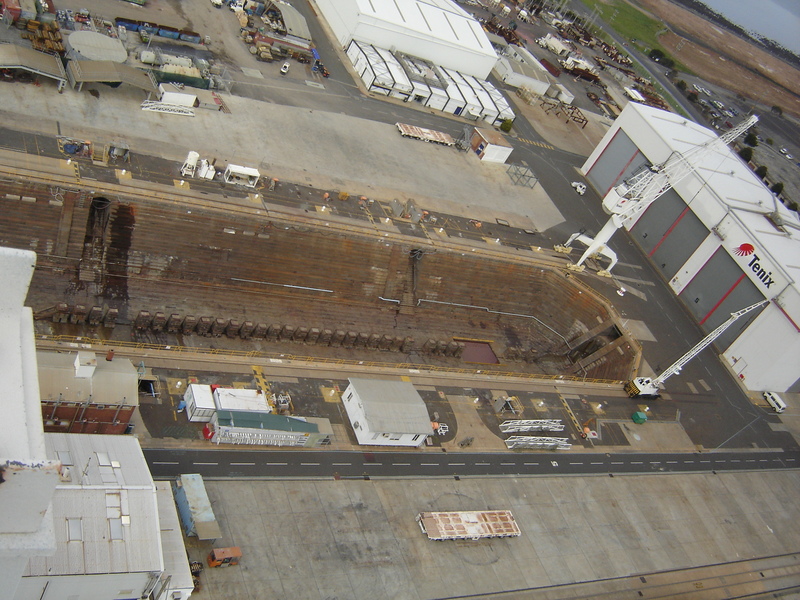
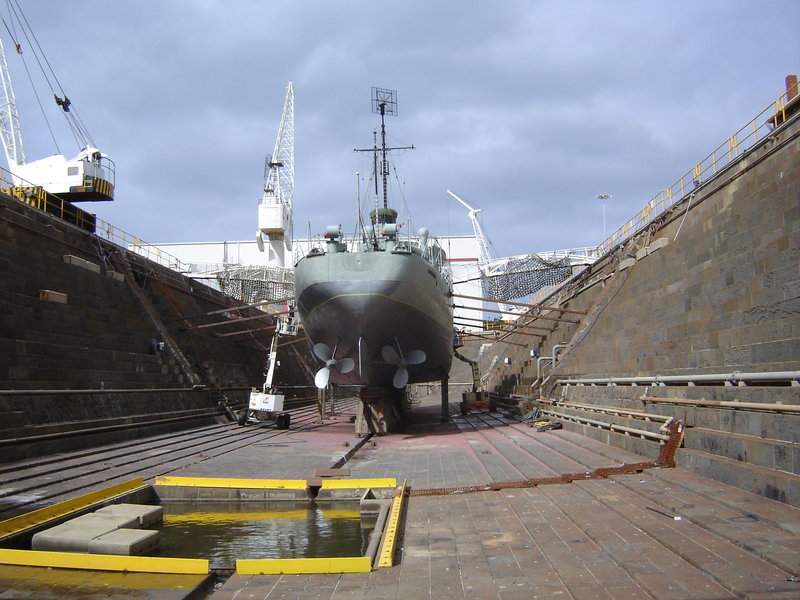
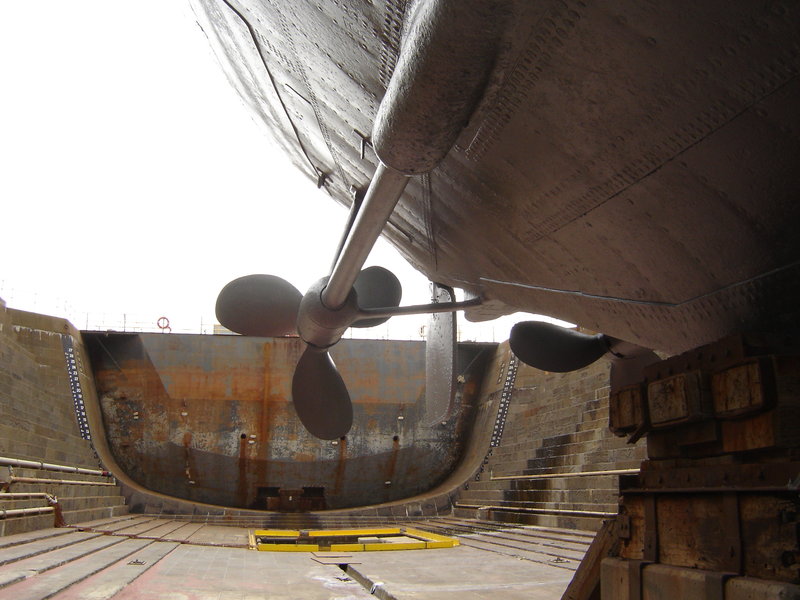






















Statement of Significance
What is significant?
The Alfred Graving Dock in the Williamstown Dockyard.
History Summary
The Alfred Graving Dock was constructed by contractors for the Victorian Government between 1864 and 1873 at a total cost exceeding £300,000. It was the largest works undertaken by the Victorian government at that time and was of international importance both as a facility for shipping and as a work of engineering. In 1913 the dock was incorporated into a new dockyard owned by the Victorian Government and known as the State Shipbuilding Yard. In 1918 the Commonwealth Government purchased the site and in 1924 the Melbourne Harbor Trust (MHT) purchased the dockyard. After the outbreak of World War II the MHT used the dockyards for the conversion of merchant vessels and trawlers for war purposes and the construction of naval vessels. The Royal Australian Navy requisitioned the dockyard in 1942. The dockyard was sold to a private company in 1988 and in 2009 was owned by BAE systems. Although major alterations have been made to the wider dockyard area, the Alfred Graving Dock remains substantially intact. It has been in continual use for ship repair since 1874.
Description Summary
The Alfred Graving Dock is an excavated pit, approximately 126 metres in length and 30 metres wide. The pit is lined with closely interlocking basalt blocks, with most blocks generally measuring a metre cubed. It is built in the form of an inverted arch. A floating caisson or dock gate is located at the seaward end of the dock. There are capstans at the land (2) and seaward (2) end of the Dock. In 1987, 188 basalt blocks ranging in size from 50x30x70cm to 200x30x70cm were removed from the base of the dock and mortared together to form a patio at the north of Nelson Place. Two large iron plates in the dock indicate their original location. The Alfred Graving Dock is located within an extensive dockyard complex on Nelson Place, Williamstown.
This site is part of the traditional land of the Yalukit Wilum people.
How is it significant?
The Alfred Graving Dock is of architectural and historical significance to the State of Victoria. It satisfies the following criterion for inclusion in the Victorian Heritage Register:
Criterion A
Importance to the course, or pattern, of Victoria's cultural history.
Criterion F
Importance in demonstrating a high degree of creative or technical achievement at a particular period.
Criterion H
Special association with the life or works of a person, or group of persons, of importance in Victoria's history.
Why is it significant?
The Alfred Graving Dock significant at the State level for the following reasons:
The Alfred Graving Dock is historically significant as one of the greatest public works constructed in Australia in the nineteenth century and as an expression of the technical skill of Victorian architects, engineers and stonemasons. It provided an essential shipbuilding and repair facility in colonial Victoria when the colony was almost entirely reliant on maritime transport for economic development and population growth. It was an installation vital to the defence of Victoria in the late nineteenth century and early twentieth century and important to the naval defence of Australia in the twentieth century. As a key component of the Williamstown dockyard, it has made a vital economic and social contribution to a working-class community employed principally in maritime related activity. [Criterion A & F]
The Alfred Graving Dock is architecturally significant as an example of the work of the distinguished architect and Victoria's Inspector-General of Public Works from 1861 to 1878, William Wilkinson Wardell. Wardell also designed Government House, St Patrick's Cathedral, and the Gothic ANZ Bank on the corner of Collins and Queen Streets. [Criterion H]
-
-
ALFRED GRAVING DOCK - History
History Summary
The Alfred Graving Dock was constructed by contractors for the Victorian Government between 1864 and 1873 at a total cost exceeding £300,000. It was the largest works undertaken by the Victorian government at that time and was of international importance both as a facility for shipping and as a work of engineering. In 1913 the dock was incorporated into a new dockyard owned by the Victorian Government and known as the State Shipbuilding Yard. In 1918 the Commonwealth Government purchased the site and in 1924 the Melbourne Harbor Trust (MHT) purchased the dockyard. After the outbreak of World War II the MHT used the dockyards for the conversion of merchant vessels and trawlers for war purposes and the construction of naval vessels. The Royal Australian Navy requisitioned the dockyard in 1942. The dockyard was sold to a private company in 1988 and in 2009 was owned by BAE systems. Although major alterations have been made to the wider dockyard area, the Alfred Graving Dock remains substantially intact. It has been in continual use for ship repair since 1874.
Contextual History
Williamstown's role as a maritime centre developed from the earliest days of settlement in the Port Phillip District. Because the most convenient anchorage point for large vessels was in the comparatively deep water off Point Gellibrand, early government maritime -related services, such as pilots and customs officers were located here, as was the first Government-built jetty. When gold discoveries brought thousands of immigrants to Victoria in the 1850s, the limited facilities of the port of Melbourne were placed under severe stress. A Parliamentary Committee report on Victoria's ports recommended in 1853 that the government construct a dry dock for the repair and maintenance of vessels or, at the very least, a patent slip. Work began on the government patent slip at Williamstown in 1856 (Barnard, 2008). The graving dock would be constructed adjacent to the patent slip.
History of Place
Inspector General of Public Works William Wilkinson Wardell designed the graving dock and it was constructed by a number of contractors, including Glaister and Co, James Leggatt and John Deane,(Public Works Department Contract Books, 1866, 1868). Work commenced in 1864 with the construction of a 300 metre long timber coffer dam. The memorial stone was laid by HRH. Prince Alfred on 4 January 1868. This occurred as part of the first royal tour of the Australian colonies. Henry Turnbull and Co. constructed a wharf at the dockyard in 1871 (Public Works Department Contract Book). Langlands Foundry of Flinders Lane Melbourne constructed the wrought iron caisson, which, placed at the seaward end of the dock, was moved to allow vessels to be floated into the dock to be repaired (Public Works Department Contract Book, 1871-1872). Engine and boiler houses completed the major work of constructing the dockyard in 1873. The total cost exceeded £300,000. It was the largest work undertaken by the Victorian government at that time and was of international importance both as a facility for shipping and as a work of engineering.
The first vessel to enter the dry dock was HMVS Nelson in 1874 which became the first line-of-battle ship to be dry docked south of the equator. The Nelson, as Victoria's first naval training ship, formed the nucleus of Victoria's naval defence force. It was based at the dockyard, where, not far from the graving dock, a torpedo depot had been established in 1870. The torpedo depot formed part of Melbourne's defence system. In 1885 it became Victoria's Naval Depot.
In 1913 the dockyard became part of the state shipbuilding yard. The state government enlarged and modernised the dockyard, employing skilled tradesmen and engineers, some of them recruited from Britain (MHT Commissioners' Report, 1942, p. 28). The Commonwealth Government acquired the State Shipbuilding Yard in 1917 for the purpose of replacing some of the Australian vessels lost through enemy action in World War I (MHT Commissioners' Report, 1942, p. 28).
After completing six vessels, the Commonwealth sold the dockyard to the Melbourne Harbor Trust in 1924. Plans were prepared for a large slip to be added to the site. The MHT used the dockyards to construct dredging plant and vessels and cranes, and also provided maintenance for Commonwealth and State government and privately-owned vessels (MHT Commissioners' Report, 1942, p. 29)
When World War II began, the MHT began converting merchant vessels and trawlers for war purposes and, under contract to the Commonwealth Government, constructed eight naval vessels of the anti-submarine and mine-sweeping class (MHT Commissioners' Report, 1942, p27). In addition the MHT continued to carry out maintenance and repair work and the fitting out of troop ships at the dockyard. The ship building programme required reorganisation of the dockyard, including the removal of slipways and erection of two 600 feet building berths, the demolition of some buildings and erection of extensive sheds, offices and staff quarters (MHT Commissioners' Report, 1941, p. 28) The dockyards workforce was substantially increased from the pre-war figure of 120 to over 1000 (MHT Commissioners' Report, 1942, p. 29).
The Royal Australian Navy requisitioned the dockyard in 1942, when it considered that the Garden Island Dockyard in Sydney was likely to be a focal point of enemy action against Sydney (MHT Commissioners' Report, 1942, p. 31). The dockyard was renamed HMAS Naval Dockyard, Williamstown and later, Williamstown Naval Dockyard. The dockyard was sold to a private company in 1988 and is currently owned by BAE systems. Although major alterations have been made to the dockyard (including the demolition since 1988 of a slipway), the Alfred Graving Dock remains substantially intact. It has been used for ship repair since 1874 and remains in use.
Sources
PROV VPRS 979/P0, Public Works Department Contract Books
Melbourne Harbor Trust Commissioners Reports
Jill Barnard, Jetties and Piers, A Background History of Maritime Infrastructure Sites in Victoria, Heritage Council of Victoria, 2008
ALFRED GRAVING DOCK - Permit Exemptions
General Exemptions:General exemptions apply to all places and objects included in the Victorian Heritage Register (VHR). General exemptions have been designed to allow everyday activities, maintenance and changes to your property, which don’t harm its cultural heritage significance, to proceed without the need to obtain approvals under the Heritage Act 2017.Places of worship: In some circumstances, you can alter a place of worship to accommodate religious practices without a permit, but you must notify the Executive Director of Heritage Victoria before you start the works or activities at least 20 business days before the works or activities are to commence.Subdivision/consolidation: Permit exemptions exist for some subdivisions and consolidations. If the subdivision or consolidation is in accordance with a planning permit granted under Part 4 of the Planning and Environment Act 1987 and the application for the planning permit was referred to the Executive Director of Heritage Victoria as a determining referral authority, a permit is not required.Specific exemptions may also apply to your registered place or object. If applicable, these are listed below. Specific exemptions are tailored to the conservation and management needs of an individual registered place or object and set out works and activities that are exempt from the requirements of a permit. Specific exemptions prevail if they conflict with general exemptions. Find out more about heritage permit exemptions here.Specific Exemptions:PERMIT EXEMPTIONS
General Condition 1
All exempted alterations are to be planned and carried out in a manner which prevents damage to the fabric of the registered place or object.
General Condition 2
Should it become apparent during further inspection or the carrying out of works that original or previously hidden or inaccessible details of the place or object are revealed which relate to the significance of the place or object, then the exemption covering such works shall cease and Heritage Victoria shall be notified as soon as possible.
General Condition 3
All works should be informed by Conservation Management Plans prepared for the place. The Executive Director is not bound by any Conservation Management Plan, and permits still must be obtained for works suggested in any Conservation Management Plan.
General Condition 4
Nothing in this determination prevents the Heritage Council from amending or rescinding all or any of the permit exemptions.
General Condition 5
Nothing in this determination exempts owners or their agents from the responsibility to seek relevant planning or building permits from the relevant responsible authority, where applicable.
Specific Permit Exemptions
Minor repairs and maintenance which replaces like with like and which ensures that the original formation of the dock remains unaltered.
ALFRED GRAVING DOCK - Permit Exemption Policy
Preamble
The purpose of the Permit Policy is to assist when considering or making decisions regarding works to a registered place. It is recommended that any proposed works be discussed with an officer of Heritage Victoria prior to making a permit application. Discussing proposed works will assist in answering questions the owner may have and aid any decisions regarding works to the place.
The extent of registration includes all of the buildings, features and all of the land shown hatched on Diagram 697.
Under the Heritage Act 1995 a person must not remove or demolish, damage or despoil, develop or alter or excavate, relocate or disturb the position of any part of a registered place or object without approval. It is acknowledged, however, that alterations and other works may be required to keep places and objects in good repair and adapt them for use into the future.
If a person wishes to undertake works or activities in relation to a registered place or registered object, they must apply to the Executive Director, Heritage Victoria for a permit. The purpose of a permit is to enable appropriate change to a place and to effectively manage adverse impacts on the cultural heritage significance of a place as a consequence of change. If an owner is uncertain whether a heritage permit is required, it is recommended that Heritage Victoria be contacted.
Permits are required for anything which alters the place or object, unless a permit exemption is granted. Permit exemptions usually cover routine maintenance and upkeep issues faced by owners as well as minor works. They may include appropriate works that are specified in a conservation management plan. Permit exemptions can be granted at the time of registration (under s.42 of the Heritage Act) or after registration (under s.66 of the Heritage Act).
It should be noted that the addition of new buildings to the registered place, as well as alterations to the interior and exterior of existing buildings requires a permit, unless a specific permit exemption is granted.
-
-
-
-
-
FORMER MORGUE
 Victorian Heritage Register H1512
Victorian Heritage Register H1512 -
TIME BALL TOWER
 Victorian Heritage Register H1649
Victorian Heritage Register H1649 -
WILLIAMSTOWN RAILWAY STATION COMPLEX
 Victorian Heritage Register H1599
Victorian Heritage Register H1599
-
'CARINYA' LADSONS STORE
 Victorian Heritage Register H0568
Victorian Heritage Register H0568 -
1 Alexander Street
 Yarra City
Yarra City -
1 Botherambo Street
 Yarra City
Yarra City
-
-







